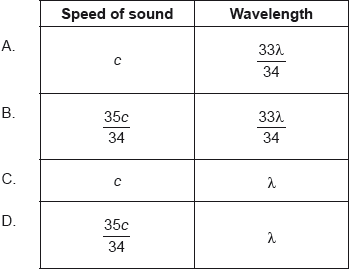| Date | November 2016 | Marks available | 6 | Reference code | 16N.2.HL.TZ0.6 |
| Level | Higher level | Paper | Paper 2 | Time zone | 0 - no time zone |
| Command term | Determine, Explain, and Suggest | Question number | 6 | Adapted from | N/A |
Question
Police use radar to detect speeding cars. A police officer stands at the side of the road and points a radar device at an approaching car. The device emits microwaves which reflect off the car and return to the device. A change in frequency between the emitted and received microwaves is measured at the radar device.
The frequency change Δf is given by
where f is the transmitter frequency, v is the speed of the car and c is the wave speed.
The following data are available.
Transmitter frequency f = 40 GHz Δf = 9.5 kHz Maximum speed allowed = 28 m s–1
(i) Explain the reason for the frequency change.
(ii) Suggest why there is a factor of 2 in the frequency-change equation.
(iii) Determine whether the speed of the car is below the maximum speed allowed.
Airports use radar to track the position of aircraft. The waves are reflected from the aircraft and detected by a large circular receiver. The receiver must be able to resolve the radar images of two aircraft flying close to each other.
The following data are available.
Diameter of circular radar receiver = 9.3 m Wavelength of radar = 2.5 cm Distance of two aircraft from the airport = 31 km
Calculate the minimum distance between the two aircraft when their images can just be resolved.
Markscheme
i
mention of Doppler effect
OR
«relative» motion between source and observer produces frequency/wavelength change
Accept answers which refer to a double frequency shift.
Award [0] if there is any suggestion that the wave speed is changed in the process.
the reflected waves come from an approaching “source”
OR
the incident waves strike an approaching “observer”
increased frequency received «by the device or by the car»
ii
the car is a moving “observer” and then a moving “source”, so the Doppler effect occurs twice
OR
the reflected radar appears to come from a “virtual image” of the device travelling at 2 v towards the device
iii
ALTERNATIVE 1
For both alternatives, allow ecf to conclusion if v OR Δf are incorrectly calculated.
v = «» 36 «ms–1»
«36> 28» so car exceeded limit
There must be a sense of a conclusion even if numbers are not quoted.
ALTERNATIVE 2
reverse argument using speed limit.
«» 7500 «Hz»
« 9500> 7500» so car exceeded limit
There must be a sense of a conclusion even if numbers are not quoted.
Award [2] for a bald correct answer.
Award [1 max] for POT error.
100 «m»
Award [1 max] for 83m (omits 1.22).


